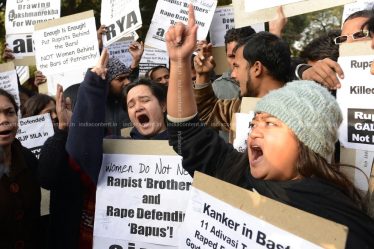
Pakistan’s former Prime Minister Benazir Bhutto was killed in December 2007 by a 15-year old suicide bomber, Bilal, on behalf of the Pakistan Taliban in Rawalpindi. Some narratives are never quite put to rest. The assassination of Benazir Bhutto is one of those stories which still raise a question mark on the investigation that runs into dead ends.

Benazir Bhutto Biography:
Benazir Bhutto was born on 21st June, 1953 to a politically active family in Karachi, Pakistan. Her grandfather was a feudal lord that helped paved the way for Pakistan to become harmless state for South Asian Muslims. Her father Zulfikar Bhutto served as Prime Minister of Pakistan in 1973 and became the Nation’s first democratically elected PM.
Benazir was exposed to the world of politics from a very early age. She completed her schooling from Jesus and Mary Convent, a boarding school in Murree. She went on to Harvard University to study Government and War. This is where she began shaping her own world view. She focused on democratic principles, liberalization and women’s rights. After graduating from Oxford in 1977, Benazir returned home to Pakistan.
In July that year a military General Muhammad Zia-ul-Haq, who was appointed by her father Zulfikar, declared martial law. He placed Zulfikar under arrest and his family under house arrest. The military action was later referred to as Operation Fair Play. The General became President and by many accounts turned the government into brutal military dictatorship.
In 1979 things got even worse. The former Prime Minister Mr. Zulfikar Bhutto was convicted of ordering the murder of his political opponents. Benazir Bhutto and her mother Begum Nusrat Ispahani continued to fight for democracy after her father’s death. Her mother became the new leader of Pakistan Peoples Party (PPP). They focused her attention on calling up the military government for creating their own political platform.
In 1984 after being detained for several times, Benazir returned to United Kingdom where she became the party’s leader in exile. Three years later she returned Pakistan with clear goals in mind. She wanted the dictatorship that killed her father to come to an end and wanted free and fair elections to take place in Pakistan. She began campaigning nationwide for the elections that year. In the late 1987s she married Asif Ali Zardari. In August 1988, months before the general elections were held; a mysterious plane crash killed the nation’s dictator, General Muhammad Zia-ul-Haq.

The unexpected event paved the way for the PPP to rise to power. The group selected Benazir to become the nation’s next Prime Minister. She not only became the country’s first female Prime Minister but first elected female leader of Muslim nation anywhere. Her party promised to work on the socialist principles and to improve the lives of the women by reviewing laws that restricted their freedom. Although her party won majority seats in the Parliament, they still faced a significant opposition that made the legislative moves difficult. Her government wasn’t able to pass any legislation in the first 14-months in office.
Her party’s government got involved in many corruption scandals. Only two years after coming to power, Bhutto’s government was dismissed over alleged corruption and her husband was put in 2-years of prison. Her opponent, Nawaz Sharif campaigned on an anti-corruption platform and became the Prime Minister after her dismissal.
Benazir Bhutto Assassination:
In 1993 Benazir Bhutto got her chance again to become the Prime Minster of Pakistan as Nawaz Sharif was dismissed for his own corruption scandals that year. She didn’t have a working majority in the Parliament and was unable to achieve much even in her second term. She also had to significantly raise taxes in the country to repay the huge debts to the International Monetary Fund (IMF) and this act made the public discontent.
Then another corruption scandal involving her husband shook her administration and dismissed her from the office in 1996. Bhutto left Pakistan on self imposed exile as she faced corruption charges and Nawaz Sharif was re-elected as PM. Another military coup ousted Nawaz Sharif and General Pervez Musharraf became the new leader and another brutal dictatorship was established in the country.
After the September 11 attacks in 2001, Pervez Musharraf faced pressure from the US and other countries to restore democracy in Pakistan. Another opportunity had presented itself to Benazir. In 2007, she returned Pakistan after more than 8-years of exile. She was seen as the most favorite candidate to restore democracy in the country. But because of support from US and several liberal positions, she became a target of extremism in the country.

When she returned, a suicide bomber attacked her home-coming rally. Nearly 140 people were killed in the attack. But Bhutto managed to survive and continued to campaign for democracy despite for threats. After leaving a rally in Rawalpindi, Bhutto was shot at close range and then a bomb went off. She was taken to the hospital but she succumbed to her wounds.

